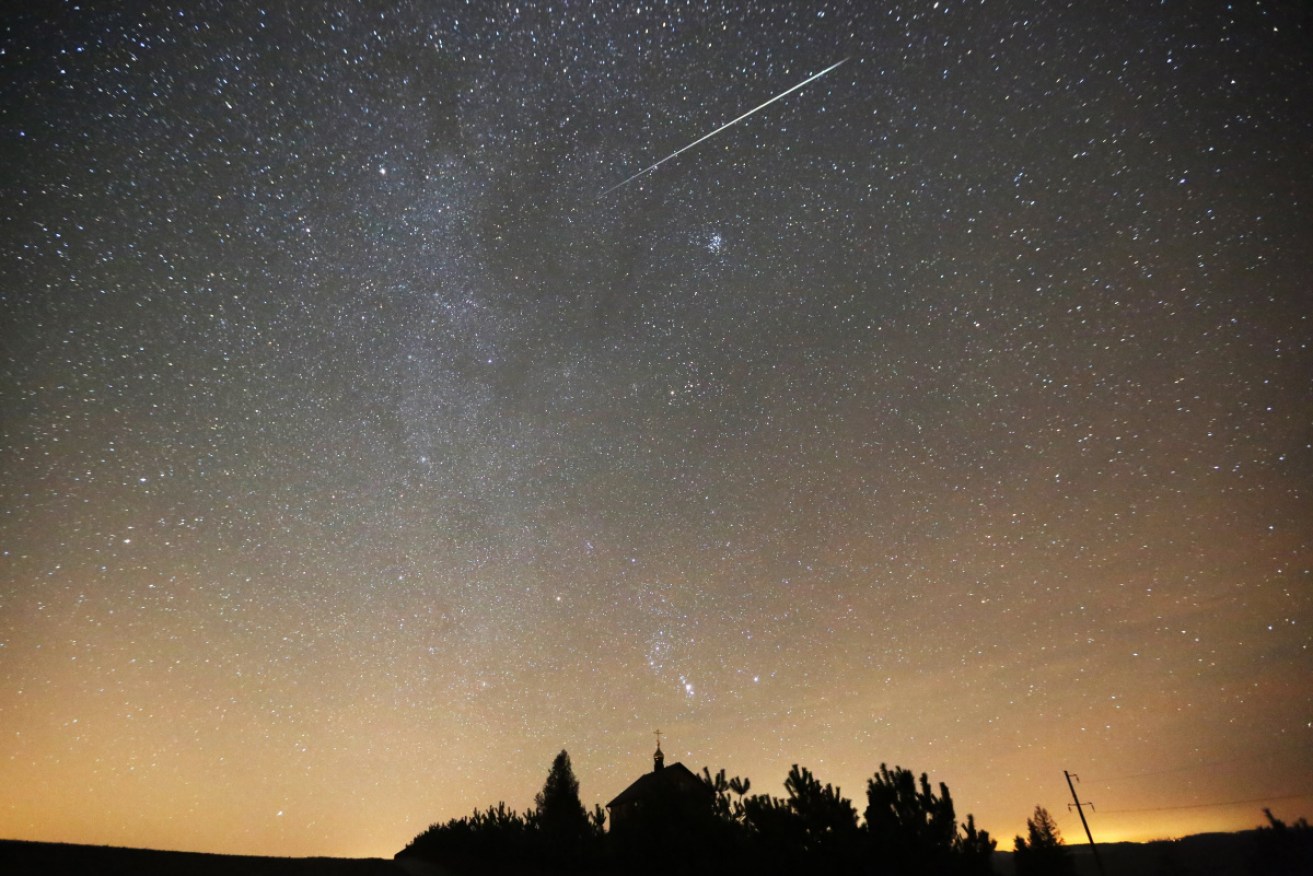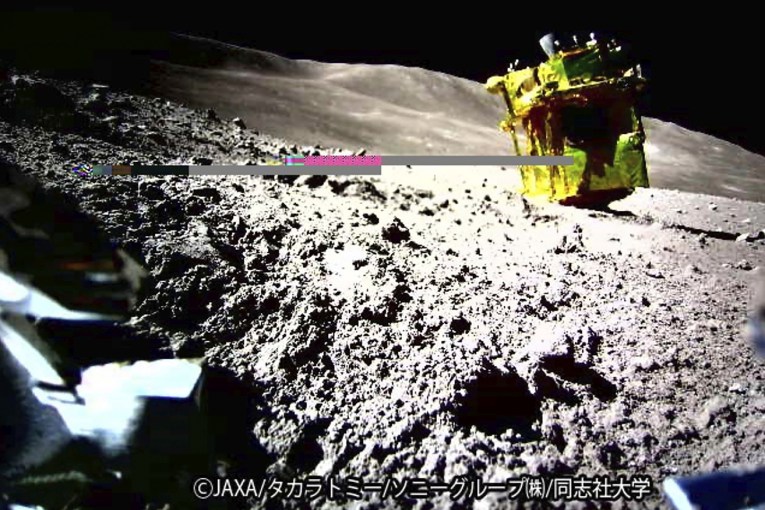Christmas Comet, meteor shower offer a festive visual treat


A meteor from the 2017 Geminid shower burns up in the sky above Belarus. Photo: AAP
Australia’s astronomers are set for a weekend light show that should put the best of on-ground festive displays to shame.
From Friday night, night-sky watchers will be able to indulge in the rare spectacle of the so-called Christmas Comet and then the Geminid meteor shower.
The Christmas Comet – named for the time of year it appears – is expected to emerge from 9pm (AEDT) on Friday as a green and fuzzy comet in the east, close to the constellation known as Orion, or the Saucepan, ANU astronomer Dr Brad Tucker said.
“The green colour is coming from the gas that is coming off the comet,” he said.
“There is a bunch of ice on it and methane. It’s essentially like a dirty snowball and so, when it goes around the sun, it melts … and is a steamy, stinky green glow.”
It is a rare chance for Australians to catch a glimpse of the comet (officially called 46P/Wirtanen). It appears only once every five years and even then is usually too far away to be seen.
For those in the AEDT timezone, Wirtanen will be at its closest to Earth – a mere 11.5 million kilometres away – early on Sunday morning.
Imagen de las Pléyades y el Cometa 46P/Wirtanen tomada desde Australia https://t.co/HiZkqfp530 vía eluniverso pic.twitter.com/6Qnf6pR5VL
— Clima en Guayana (@climaguayana) December 12, 2018
Amateur astronomer Ian Musgrave told the ABC the Christmas comet could be seen from anywhere in Australia in the north-eastern sky from about an hour and a half after sunset until early morning.
“[Later in the week] it is better starting a little bit after midnight. By then the waxing moon is setting and is out of the way,” Dr Musgrave said.
The comet will be at its brightest until December 18.
Throughout this coming weekend, there will also be another visual treat with shooting stars set to flash across the sky in the Geminid meteor shower as Earth passes through the tail of the 3200 Phaethon asteroid.
They’ll look impressive from the ground but the falling stars are actually just small rocks that have broken off from the asteroid before burning up in the Earth’s atmosphere.
“They’re about the size of a grain of sand, or even a small pebble and they’re travelling tens of thousands of kilometres an hour,” Dr Tucker said.
Observers will need a pair of binoculars or a telescope to catch the Christmas Comet. The meteor shower, however, will be visible from anywhere in Australia, even major cities – as long as it’s a clear night.
“It’s very accessible, you don’t need anything special, you just need the night sky,” Dr Tucker said.
MAAS Sydney Observatory curator and astronomer Dr Andrew Jacob said the best chances of seeing the meteor shower – described by website meteorwatch.org as “the grand finale of astronomical events in 2018” – varied only slightly across Australia.
“For Sydneysiders, the best time to view the Geminids will be Friday the 14th, from about 11pm,” he told Australian Geographic. “However, the sky will darken once the moon sets, at about 1am, making the stars seem even brighter.”
Would-be watchers can also increase their chances by avoiding city and street lights, where possible.
Dr Jacobs said those in rural areas would have the best views of the Geminid meteors. But city-dwellers need not despair.
“Try to find the darkest (and safest) place you can – a large park, a coastal headland, a suburb on the outskirts or the top of a hill,” he said.
“This will give you the best chance. However, from a city site only the brightest meteors will be visible.”
The Geminids meteor shower should be visible all weekend, until Sunday, December 16.
Anyone cursed with bad weather or unavoidable city lights on Friday should try again on Saturday or Sunday.
-with AAP








